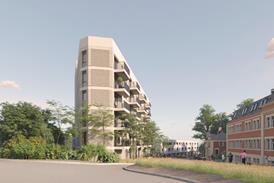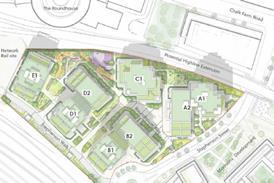Adaptable buildings are often the most sustainable, so how do we ensure today’s architecture is fit for tomorrow, asks Robert Adam

In 2007, Carl Elefante, president of the American Institute of Architects, famously said: “The greenest building is the one that already exists.” This is a slogan for the retro-fit campaign, now being waged on the Marks and Spencer building in Oxford Street with the support of many famous architects.
The fact that architects, who get credit and fame from new buildings, support converting buildings rather than replacing them, is a testament to their environmental commitment.
There’s work to be had with retro-fitting buildings and the ingenuity of the profession can be put to good use while claiming to save the planet. But there are always new buildings where the profession can flex its creative muscles.
If Elefante is right, however, his insight can be taken into the future. After all, sustainability is about the future. The Bruntland Commission’s 1987 definition still stands: “Sustainable development is development that meets the needs of the present without compromising the ability of future generations to meet their own needs.”
Bring the two ideas together and you get something like: the greenest development is the one that can be re-used in the future. Unfortunately, the only thing you know about the future is that you don’t know exactly what it will be. But the principle that buildings that last a long time are intrinsically sustainable is fundamental. This is the real elephant in the room with new building design.
We need to think about how to make buildings last longer
If an office building lasts 200 years this saves five re-build cycles, according to the average life-span of a UK commercial building. On the 60-year design-life-expectancy of houses, it would save three re-build cycles. And some figures show that the embodied carbon in construction can represent up to 62% of the whole-life-cycle carbon emissions of buildings.
We need to think about how to make buildings last longer. But as there are so many unknowns, there’s no sure way to measure it. Even where it’s attempted, it’s just the things that make up the building. But the survival of a building is much more than its materials. Being adaptable means being able to be used for lots of different things. But as the future is unpredictable, we can’t really know what the future functions might be.
We can make a list of potentials: houses, flats, offices, retail, community.
Houses and flats are by far the largest use type. Living space should be naturally lit and ventilated. Generally, spaces more than six metres from an exterior are not habitable. If you have either single-aspect flats (not ideal but common enough) or houses, a reasonable maximum internal wall-to-wall distance would be around 12 to 13 metres. If a building is to be a house or terraced houses, the maximum reasonable walkable height is four storeys.
The sustainable elephant in the architect’s studio is the four-storey, 12 metre deep, high-ceiling, solid-wall building with windows
Does this work for offices? Cross-ventilated and naturally-lit offices are energy efficient and functional. Deep plan offices are hard to convert to anything and need a lot of engineering. And who knows what will happen with energy? Access without the need for lifts is healthy and not energy-dependent.
Community buildings have various functions, the largest would be the assembly of numbers of people. If we take the nave of Salisbury Cathedral, it is around 12 metres wide. For retail uses, almost always on ground floors, the most valuable space is the first 13 metres.
To be available for adaptation, buildings have to survive. New designs fall out of fashion but can come back decades later. There can be political, economic and urban reasons to remove buildings but there are three things that allow a building to survive: flexibility, robustness and beauty - but the greatest of these is robustness. Without robustness, wear and tear combines with being unfashionable, discouraging investment and encouraging demolition. Without robustness, there is no base to bring it up to date. Without robustness there is no solid structure for future uses. Without robustness, there is no adaptability.
What is robustness? Strong loadbearing floors. Solid durable walls with windows - glass walls are notoriously unsustainable and panels are hard to modify. Generous floor-to-ceiling heights, particularly on the ground floor or there are no future shops or workshops.
If we care about making our buildings sustainable, we must care about their future. This means making buildings that are most likely to survive for longest and are easily adapted. The sustainable elephant in the architect’s studio is the four-storey, 12 metre deep, high-ceiling, solid-wall building with windows. Sound familiar?
















4 Readers' comments